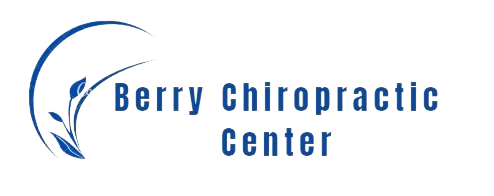When it comes to back pain, both chiropractic care and surgery present viable treatment options, each with their unique set of advantages and potential drawbacks. Chiropractic care, with its non-invasive approach and focus on holistic health, could offer a solution for those wary of surgical risks. On the other hand, surgery may provide immediate relief for more severe cases. A closer examination of these two contrasting approaches may shed light on a decision that often proves challenging for many. Let’s dissect these avenues of care to better equip you in making an informed choice for your health.
Understanding Back Pain
A staggering number of individuals worldwide contend with the pervasive issue of back pain. It is a complex condition that can be caused by a multitude of factors such as poor posture, obesity, stress, aging, and injuries. Chronic back pain, an ongoing or long-term type of pain, is particularly troubling due to its protracted nature and the notable impact it can have on an individual’s quality of life.
Back pain is often categorized into two types: acute and chronic. Acute pain is typically a direct result of tissue damage and tends to be temporary, whereas chronic pain persists for longer periods, often exceeding three months. This persistence often leads to a cyclic pattern of pain, disability, and decreased activity, further exacerbating the issue.
Pain management for back pain is a multi-faceted approach that can include medication, physiotherapy, lifestyle changes, and in more severe cases, surgery. However, each individual’s pain experience and response to treatment can vary considerably, making it essential to understand the underlying causes of back pain in order to tailor an effective pain management strategy.
Overview of Chiropractic Care
Chiropractic care is a non-invasive approach to managing back pain, utilizing manual manipulation and various techniques to stimulate the body’s healing processes. This method offers numerous benefits, including pain reduction and improved mobility, without resorting to surgical intervention. For those considering this approach, it’s worth exploring further to determine Is Chiropractic Care Right for You? and how it can fit into your overall wellness strategy.
Understanding Chiropractic Techniques
Often misunderstood, chiropractic techniques are an essential component of nonsurgical back pain management. These techniques focus primarily on the body’s musculoskeletal structure, specifically the spine, to improve overall health. Chiropractors use hands-on spinal manipulation and other alternative treatments to enable the body to heal itself without surgery or medication.
Spinal alignment is a vital aspect of chiropractic care. Misalignment of the spine can interfere with the nervous system, leading to various health issues, including back pain. Chiropractors employ different therapeutic techniques to adjust and realign the spine, soothing the nerves and enhancing body functionality.
One such technique is spinal manipulation, also known as chiropractic adjustment. This technique involves applying controlled force to a joint in the spine that has become restricted in its movement. Another widely used method is spinal mobilization, a gentler approach involving less force and more stretching.
Chiropractors may also use adjunctive therapies alongside spinal adjustments, such as heat and cold therapy, electric stimulation, or rehabilitative exercises. These therapeutic techniques complement spinal adjustments, contributing to the overall effectiveness of chiropractic care in managing back pain. Understanding these techniques can help individuals make informed decisions about their back pain management.
Benefits of Chiropractic Care
Delving into the benefits of chiropractic care reveals a myriad of advantages for individuals suffering from back pain. This holistic approach focuses on the body’s inherent healing capabilities, and is centered around non-invasive chiropractic techniques. It emphasizes spinal alignment, which affects the overall health of the nervous system, leading to improved pain management and injury prevention.
- Patient Education: Chiropractors focus on patient education, helping individuals understand their body and how it functions. This empowers patients to make informed decisions about their health, fostering long term wellness.
- Lifestyle Modifications: Chiropractic care encourages lifestyle modifications such as improvements in diet, exercise, and posture. These changes not only alleviate current symptoms, but also aid in preventing future occurrences of back pain.
- Holistic Approach: Chiropractic care addresses the body as a whole, rather than focusing solely on the area of pain. This holistic approach can identify and rectify issues in the nervous system, which can indirectly cause back pain.
Benefits of Chiropractic Treatment
Harnessing the innate healing power of the body, chiropractic treatment offers a bevy of benefits for individuals grappling with back pain. This holistic approach focuses on the overall health of the patient, including the optimization of the nervous system, which plays a vital role in managing pain and facilitating recovery.
The primary benefit of chiropractic treatment is its non-invasive nature. Unlike surgical interventions, it minimizes the risk of complications and reduces the recovery time. This approach promotes the body’s natural healing mechanisms, thereby often leading to more sustainable results.
Moreover, chiropractic care fosters patient empowerment. It educates individuals about their conditions, helping them understand the root cause of their back pain. This knowledge enables patients to make informed decisions regarding their treatment and fosters a sense of control over their health.
Chiropractic treatment also offers a personalized approach to back pain management. Chiropractors tailor treatment plans to the specific needs and health goals of each individual, considering factors such as age, medical history, and lifestyle. Such personalized care not only enhances the efficiency of the treatment but also improves patient compliance and satisfaction.
Potential Drawbacks of Chiropractic Care
While chiropractic care offers numerous advantages, it is not without potential drawbacks that warrant consideration. As we explore deeper into the topic, distinct issues emerge, such as effectiveness concerns and treatment duration.
- Effectiveness Concerns: While many patients have reported relief from back pain after chiropractic treatment, some studies suggest that the effectiveness of chiropractic care is similar to that of physical therapy. The difference in outcomes between these two methods of treatment may not be significant enough to justify the additional cost or time investment.
- Treatment Duration: Chiropractic treatment often requires several sessions over a prolonged period. This extended treatment duration can be inconvenient and may even be a financial burden for some patients who are unable to commit to regular appointments or who lack extensive insurance coverage.
- Limited Scope: Chiropractic care focuses on the musculoskeletal system, primarily the spine. While this targeted approach can be beneficial, it may not address other potential causes of back pain such as internal organ issues or systemic diseases. Consequently, chiropractic care, while valuable, should not replace a thorough medical evaluation.
In-depth Look at Surgical Intervention
Amid the potential limitations of chiropractic care, surgery for back pain presents an alternative solution that is often considered. It is essential, however, to understand the different surgical options available and the recovery process that follows each.
Spinal surgery can be broadly categorized into decompression and fusion surgeries. Decompression surgery involves removing a small portion of the bone to alleviate pressure on spinal nerves. On the other hand, fusion surgery involves joining two or more vertebrae together to reduce painful motion and provide spinal stability.
The selection of surgical option depends on the underlying cause of back pain. For instance, a herniated disc might be treated with a discectomy, whereas spinal stenosis may require a laminectomy. In more severe cases, spinal fusion might be necessary.
The recovery process post-surgery is a significant aspect of surgical intervention. It typically involves a combination of physical therapy, pain management, and lifestyle modifications for a period of weeks to months. The duration and intensity of the recovery process depend on the complexity of the surgery and the individual’s overall health.
Advantages of Opting for Surgery
Surgery for back pain, while more invasive than chiropractic care, presents its own unique set of advantages. The potential for immediate pain relief and long-term effectiveness are two prominent benefits that often sway individuals towards this method of treatment. In the following section, we will examine these advantages in closer detail, evaluating their impact on patient outcomes and quality of life.
Immediate Pain Relief
The decision to opt for surgical intervention often stems from an urgent need for immediate relief from debilitating back pain. The demand for immediate techniques often outweighs the potential risks associated with surgery, making it an attractive option for those suffering from severe discomfort that hinders their quality of life.
Surgical methods offer several advantages for immediate pain management:
- Speedy Recovery: Surgery often results in quick relief, as the root cause of the pain is directly addressed. Whether it’s a herniated disc or spinal stenosis, once the issue is resolved surgically, patients often experience an immediate decrease in pain.
- Immediate Mobility: Post-surgery, patients usually experience improved mobility. This enables them to return to their regular activities sooner, thereby improving their overall quality of life.
- Efficient Pain Management: Surgery offers more efficient pain management than medications or physical therapy. It directly targets and resolves the issue causing the pain, thereby eliminating the need for long-term medication use or ongoing physical therapy sessions.
Ultimately, the choice between chiropractic care and surgery depends on the individual’s specific condition, pain threshold, and personal preference. However, when immediate relief is a priority, surgery frequently becomes the preferred choice.

Long-term Effectiveness
Despite the initial pain and recovery period, opting for surgical intervention can pay off in the long run when considering its long-term effectiveness. While the recovery time may be initially longer than alternative therapies, surgery often provides a permanent solution to chronic pain, enhancing treatment outcomes considerably.
The effectiveness of a surgical intervention is often seen in the high levels of patient satisfaction. Many patients report a considerable reduction in pain and an improvement in their quality of life post-surgery. This satisfaction is not merely a result of the pain relief but also stems from the positive lifestyle impact. The debilitating effects of chronic pain can limit daily activities and restrict independence, making surgery a viable option for those seeking to regain their former lifestyle.
Moreover, when evaluating cost effectiveness, surgical intervention may prove more economical in the long term. While the upfront costs may be higher, the potential for repeated visits to alternative therapies can add up over time.
Risks Associated With Surgery
When it comes to addressing back pain, one’s decision to opt for surgery should be made with a clear understanding of the potential risks involved. Surgical interventions, while often effective, carry certain risks that must be taken into account, including surgical complications, lengthy recovery times, and the high costs involved.
- Surgical Complications: These can range from minor issues like discomfort and bruising to more serious complications such as infections, blood clots, or nerve damage. These risks may increase based on patient eligibility factors such as age, overall health, and the presence of other medical conditions.
- Recovery Time: Post-surgical recovery can be a lengthy process, often requiring weeks or even months of rehabilitation. This can impact a patient’s ability to work or engage in daily activities, affecting their quality of life.
- Cost Considerations: Surgery can be expensive, even with insurance coverage. These costs can further escalate if complications arise or if longer-term care is needed.
Long-term outcomes of surgical intervention can vary greatly, and while many people experience significant relief from back pain, others may not see a marked improvement. As a result, considering alternative therapies like chiropractic care might be beneficial for some patients.
Comparing Chiropractic Care and Surgery
Steering through the domain of back pain treatments can be complex, with patients often grappling with the decision between non-invasive approaches like chiropractic care and more drastic measures such as surgery. The choice depends on a multitude of elements, including the severity and origin of the pain, patient’s health history, and personal preference.
Chiropractic care revolves around the manual adjustment of the spine to improve function and promote natural healing. There are several chiropractic misconceptions, with one being that it is not scientifically grounded. In reality, numerous studies validate its efficacy, especially for chronic low back pain. This non-invasive approach can serve as a viable option for people looking to avoid the possible risks and long recovery period associated with surgical alternatives.
Surgery, on the other hand, is usually considered when conservative treatments fail to provide relief or if the patient’s condition is deteriorating. For those choosing between chiropractic care and surgery, various techniques are available, including microdiscectomy, spinal fusion, or disc replacement, each with their own set of pros and cons. The key is to thoroughly understand each treatment’s implications before making a decision.
Making the Right Treatment Choice
Finding the path to the most suitable treatment for back pain is often a challenging process, requiring a careful evaluation of various factors. Although there are various options available, understanding the patient’s unique case and personal preferences are essential in making the right treatment choice.
- Patient Education: Understanding the nature of the back pain, its cause, and the potential treatment options is the first step. Educated patients are more likely to make informed decisions that align with their personal and medical needs.
- Treatment Preferences: Every individual will have different comfort levels and preferences when it comes to medical treatments. Some may opt for non-invasive methods like chiropractic care, while others might consider surgery if the benefits outweigh the risks.
- Risk Versus Benefit Analysis: Each treatment option comes with its own set of risks and benefits. It’s important to weigh these carefully. For instance, chiropractic care might offer an immediate relief with minimal risks but may not provide a long-term solution for severe cases, while surgery could potentially offer a more permanent solution, but with a higher risk and longer recovery time.
Ultimately, the choice of treatment should be a collaborative decision between the patient and healthcare provider.
Frequently Asked Questions
What Is the Cost Comparison Between Chiropractic Care and Surgery?
The cost of chiropractic care and surgery varies widely, influenced by factors such as insurance coverage and treatment frequency. Generally, surgery is more expensive, but specific costs depend on the individual’s insurance and treatment plan.
Can Chiropractic Care and Surgery Be Combined for Optimal Results?
Yes, ideal results can be achieved through the integration of chiropractic care and surgical procedures. This collaborative approach often enhances recovery, mitigates pain, and improves overall patient satisfaction in the management of back pain.
How Is Recovery Time Different Between Surgery and Chiropractic Treatments?
Recovery expectations differ greatly between surgery and chiropractic treatments. Surgery often involves longer recovery times with structured rehabilitation strategies, while chiropractic care typically allows for quicker recoveries with less intensive rehabilitative needs.
What Lifestyle Changes Can Enhance the Effectiveness of Both Treatments?
Incorporating regular exercise routines and appropriate nutritional support can enhance the effectiveness of both treatments. Regular physical activity strengthens the back and nutritional support aids in tissue repair and overall well-being.
Are There Specific Conditions Where One Treatment Is More Effective Than the Other?
Yes, specific conditions can influence treatment effectiveness. For instance, chiropractic care often yields better results for subacute back pain, while surgery might be more effective for conditions like spinal stenosis or herniated disks.






